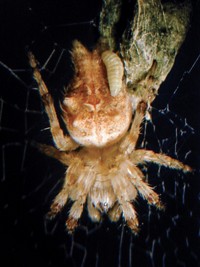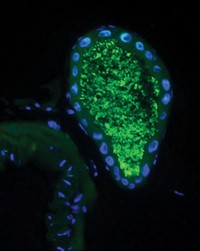Advertisement
Grab your lab coat. Let's get started
Welcome!
Welcome!
Create an account below to get 6 C&EN articles per month, receive newsletters and more - all free.
It seems this is your first time logging in online. Please enter the following information to continue.
As an ACS member you automatically get access to this site. All we need is few more details to create your reading experience.
Not you? Sign in with a different account.
Not you? Sign in with a different account.
ERROR 1
ERROR 1
ERROR 2
ERROR 2
ERROR 2
ERROR 2
ERROR 2
Password and Confirm password must match.
If you have an ACS member number, please enter it here so we can link this account to your membership. (optional)
ERROR 2
ACS values your privacy. By submitting your information, you are gaining access to C&EN and subscribing to our weekly newsletter. We use the information you provide to make your reading experience better, and we will never sell your data to third party members.
Biological Chemistry
Newscripts
Wildebeest woes: Drowning and devil weed
by Manny I. Fox Morone
July 24, 2017
| A version of this story appeared in
Volume 95, Issue 30
Wildebeests’ watery grave

Wildebeests’ migration across the Serengeti is no walk in the park. With lions, cheetahs, and crocodiles nipping at its heels (among other body parts), life ain’t easy for an ungulate.
Turns out death isn’t a simple affair either, according to a team led by Amanda Subalusky of Cary Institute of Ecosystem Studies. Almost every year, authorities report mass drownings of wildebeests as many of the animals fail to scale the steep banks of the Mara River. Annually, this all sums to several thousands of wildebeest carcasses—about 1 million kg, or the equivalent weight of 10 blue whales—being introduced into the river ecosystem in relatively quick spurts.
Although scientists figured that such a massive input into the system had significant consequences, no one had documented the phenomenon’s complex downstream effects until Subalusky took on the challenge of probing how these surges of dead carcasses sustain the river’s diverse life (Proc. Natl. Acad. Sci. USA 2017, DOI: 10.1073/pnas.1614778114).
Nile crocodiles get their fill at these mass graves, yet the crocodiles consume only about 2% of the carcasses’ total mass, the researchers estimate. Vultures and flabby-necked marabou storks do their damage as well, but Subalusky was surprised to find a less obvious sink for the nutrients: “We think of the carcasses as being relatively short-lived. They go in, and after a few weeks, they’re kind of gone. That’s what you see from the riverbank. But really, this legacy of the drownings stays behind on the bottom of the river,” she tells Newscripts.
Bones, which compose about half the wildebeests’ body mass and contain 95% of the phosphorus found in the animal, continue decomposing in the river long after the meat has been picked off. Using isotopic analysis of the river’s fish, of biofilms that form on the decaying bones, and of freshly drowned wildebeests—Subalusky’s team dragged three carcasses out for dissection—the researchers found that the bones slowly release nutrients into the ecosystem for around seven-and-a-half years, not just right after the drowning. Collectively, a year’s worth of bones contributes about 32 metric tons of carbon, 6 metric tons of nitrogen, and 12 metric tons of phosphorus annually into the river.
Through decay mechanisms seen and unseen, these mass deaths of wildebeests shuttle nutrients from the savanna’s terrestrial ecosystem into the river, maintaining a high species diversity, the researchers say. Subalusky says that if this migration is lost, “we lose all the functions that it helps maintain, even the ones we don’t know it’s maintaining.”
Runnin’ with the devil

Although grisly, mass drownings kill only about 0.5% of wildebeests. Undernutrition stemming from ever sparser and less nourishing grasslands is one of the top causes of wildebeest deaths. Two of the biggest players in this process are imports from the Americas: the ominously named devil weed and famine weed, or Chromolaena odorata and Parthenium hysterophorus, respectively.
Researchers at the Centre for Agriculture & Biosciences International and coworkers identified these and four other invasive species in the Serengeti-Mara ecosystem as particularly threatening to rangelands and thus to the wildlife migration on which the area’s tourism industry largely depends (Koedoe 2017, DOI: 10.4102/koedoe.v59i1.1426). Ironically, tourist lodges are partly to blame. Seeking to beautify their grounds, lodges introduced some of these plants into the protected area. The plants have since jumped the garden fence and started growing in the “wild,” displacing native plant species.
Famine weed—so named because it can reduce land’s ability to sustain animals by up to 90%—boasts high levels of parthenin, a compound that causes contact dermatitis in people and other animals and, if eaten, possible death. Devil weed features high oil content that exacerbates damaging wildfires, and of course, it reproduces like hell.
Manny I. Fox Morone wrote this week’s column. Please send comments and suggestions to newscripts@acs.org.




Join the conversation
Contact the reporter
Submit a Letter to the Editor for publication
Engage with us on Twitter